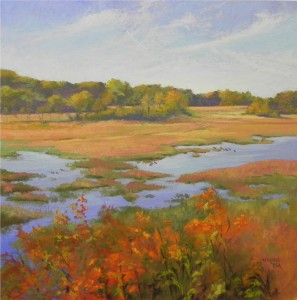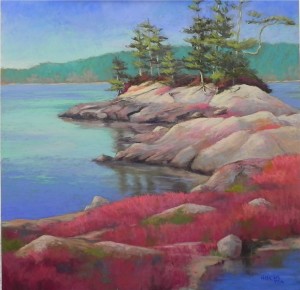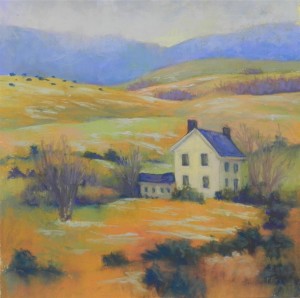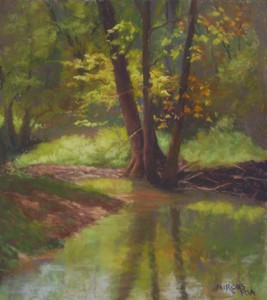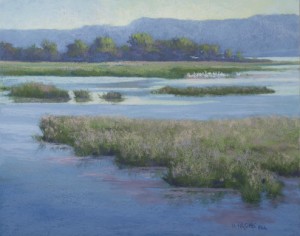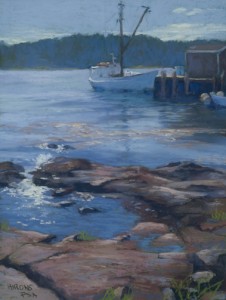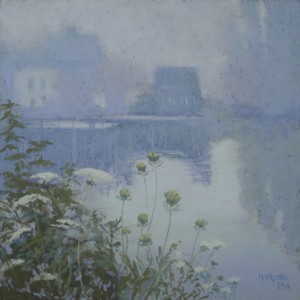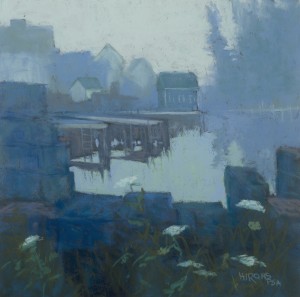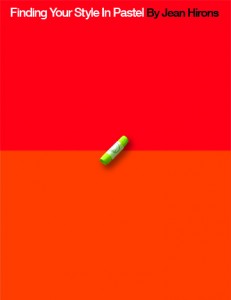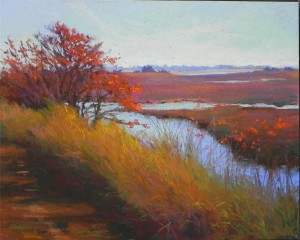 About six years ago I did a painting of this scene from Prime Hook Wildlife Refuge on the Delaware Bay. I was in a phase of painting with very bright colors and using very few neutrals. If you want to see the original, look at my website (www.jeanhirons.com), go to the MidAtlantic gallery and click to get to the second page. It is near the bottom. You might want to put your blinders on first! While scanning through old photos in preparation for an October 2013 show, I came upon the original photo that I used to paint the scene. I loved the composition and saw the possibility of doing a more subtle painting. I had a 16 x20 pastelbord that I had washed off and brushed with a red-toned gel and decided it would be perfect for this. This time I was careful to limit the really saturated colors, and began with dark browns and greens under the grasses. The background marshes are a mix of warm and cool reds with violets and green on top. There is still a lot of bright color but I am much happier with this version. (Keep in mind that digital photography heightens the reds and oranges, so the reproduction is probably a little brighter than the painting.)
About six years ago I did a painting of this scene from Prime Hook Wildlife Refuge on the Delaware Bay. I was in a phase of painting with very bright colors and using very few neutrals. If you want to see the original, look at my website (www.jeanhirons.com), go to the MidAtlantic gallery and click to get to the second page. It is near the bottom. You might want to put your blinders on first! While scanning through old photos in preparation for an October 2013 show, I came upon the original photo that I used to paint the scene. I loved the composition and saw the possibility of doing a more subtle painting. I had a 16 x20 pastelbord that I had washed off and brushed with a red-toned gel and decided it would be perfect for this. This time I was careful to limit the really saturated colors, and began with dark browns and greens under the grasses. The background marshes are a mix of warm and cool reds with violets and green on top. There is still a lot of bright color but I am much happier with this version. (Keep in mind that digital photography heightens the reds and oranges, so the reproduction is probably a little brighter than the painting.)
When I started painting in pastel, I tried to use color rather than neutrals. Some people really liked the heightened sense of color, but I’ve found that I am not more drawn to nuanced color with a few bright spots. I guess this is the aging process! But I do think it makes for paintings that are easier to live with.

